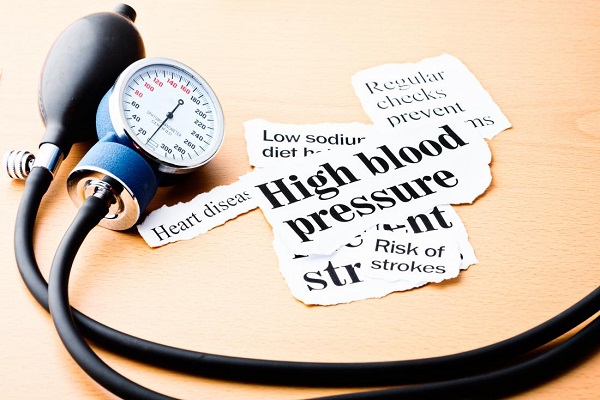The link between heart disease and stroke is significant because heart attacks and strokes have many of the same risk factors, the measures to reduce the risk of these two diseases are the same.
in women, the higher stroke risk might be due to:
- Pregnancy –The risk of stroke in pregnant women is 21 per 100,000, with the highest stroke risk during the third trimester and post-partum. Those with high blood pressure should be treated with medications and monitored closely.
- Preeclampsia – This is high blood pressure that develops during pregnancy. Preeclampsia doubles the risk of stroke later in life. If you have any history of hypertension, talk to your healthcare provider about taking low-dose aspirin starting in the second trimester.
- Birth control pills – The risk of ischemic stroke in patients using combined oral contraceptives is increased with additional stroke risk factors, including smoking, hypertension, and migraine with aura. Especially women who are already at risk of stroke should take extra precautions. Thus, it’s important that women—especially those at increased risk for stroke—discuss the benefits and risks of birth control with their doctor to help make the best possible decision for them. Get screened for high blood pressure before the pill is prescribed and never smoke while taking oral contraceptives.
Because of the high stroke risk in women, it’s important to take care of yourself. Get lots of rest, follow a heart-healthy lifestyle can lower the risk of stroke, eat the right foods and be physically active. And don’t smoke!

The risk of stroke in women using contraceptives is increased .
How Cardiovascular Stroke Risks Relate
The link between heart disease and stroke is significant. Several types of heart disease are risk factors for stroke. Likewise, stroke is a risk factor for coronary heart disease. People with coronary heart disease, angina or who have had a heart attack due to atherosclerosis (hardening of the arteries) have more than twice the risk of stroke.
- Migraines with aura –Migraine with aura is associated with ischemic stroke in younger women, particularly if they smoke or use oral contraceptives. Smokers with migraines accompanied by aura should quit immediately.
- Abnormal heart rhythm (Atrial fibrillation-AFib) or other heart disease –In AFib the heart’s upper chambers quiver (like a bowl of gelatin) rather than beating in an organized, rhythmic way. This can cause the blood to pool and clot, increasing the risk of stroke. AFib increases risk of stroke five times. People with other types of heart disease have a higher risk of stroke, too.
- High Blood Pressure, also called hypertension –High blood pressure is a leading cause of stroke. It occurs when the pressure of the blood in your arteries and other blood vessels is too high. There are often no symptoms of high blood pressure. Get your blood pressure checked often. If you have high blood pressure, lowering your blood pressure through lifestyle changes or medicine can also lower your risk for stroke.
Various lifestyle modifications can decrease the risk of developing a heart attack or stroke.
No matter what your age, you can reduce the risk of heart attack and stroke by engaging in a regular exercise program and by eating a well-balanced healthy diet. A low-fat diet with plenty of vegetables and fruit, in addition to moderate exercise several days a week is highly recommended. Other things you can do to prevent a heart attack or stroke include: Stop smoking, Limit your alcohol intake, Reduce stress.

First aid for someone who may be having a stroke
A stroke may cause loss of balance or unconsciousness, which may result in a fall. Do you know what to do if you witness an emergency or see someone who is unconscious and needs help? "First aid for someone who may be having a stroke," shared by Dr. Tran Thị Mai Thy-Neurology expert at City International Hospital.
Carry out the FAST test.
- Face: is there weakness on one side of their face?
- Arms: can they raise both arms?
- Speech: is their speech easily understood?
- Time: Phone 028.6290.1155 -or- 1800.1115 for an ambulance or ask someone else to make the call

Then, continue with these steps:
- Make sure they’re in a safe, comfortable position. Preferably, this should be lying on one side with their head slightly raised and supported in case they vomit.
- Check the airway to see if they’re breathing. If they’re having difficulty breathing, loosen any constrictive clothing, such as a tie or scarf. If they’re not breathing, perform CPR.
- Cover them with a blanket to keep them warm. Don’t give them anything to eat or drink.
- If the person is showing any weakness in a limb, avoid moving them.
- Observe the person carefully for any change in condition.
- Be prepared to tell the emergency operator about their symptoms and when they started. Be sure to mention if the person fell or hit their head.
Calling 1-1-5 or (8428) 6290 1115 at the first symptom of stroke can help you get to the hospital in time for lifesaving stroke care.
To find out more about our stroke team members and the services we provide, please contact:
City International Hospital
Cardiology
- Phone: (8428) 6280 3333, ext. 8330
- Add: No. 3, 17A Street, Binh Tri Dong B Ward, Binh Tan Dist. (Next to AEON Mall Binh Tan). Ho Chi Minh City.
- Site: https://cih.com.vn/en/
- Email: This email address is being protected from spambots. You need JavaScript enabled to view it.










